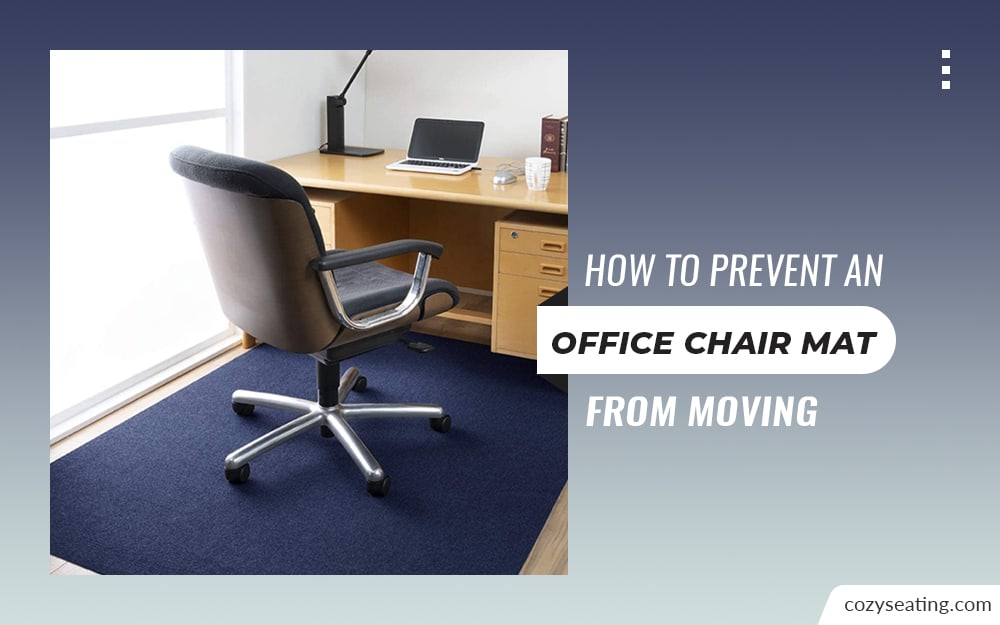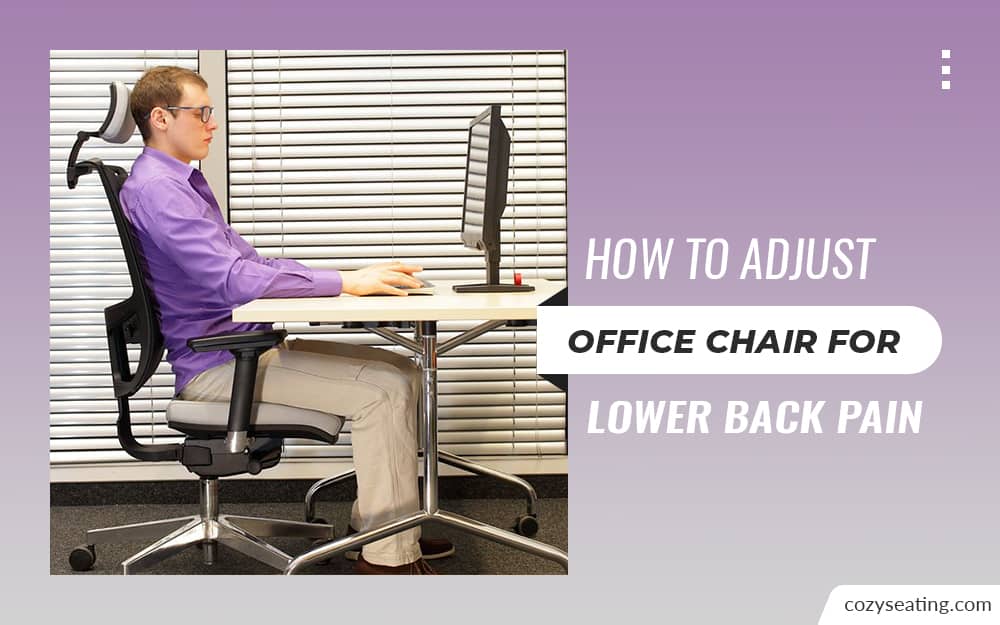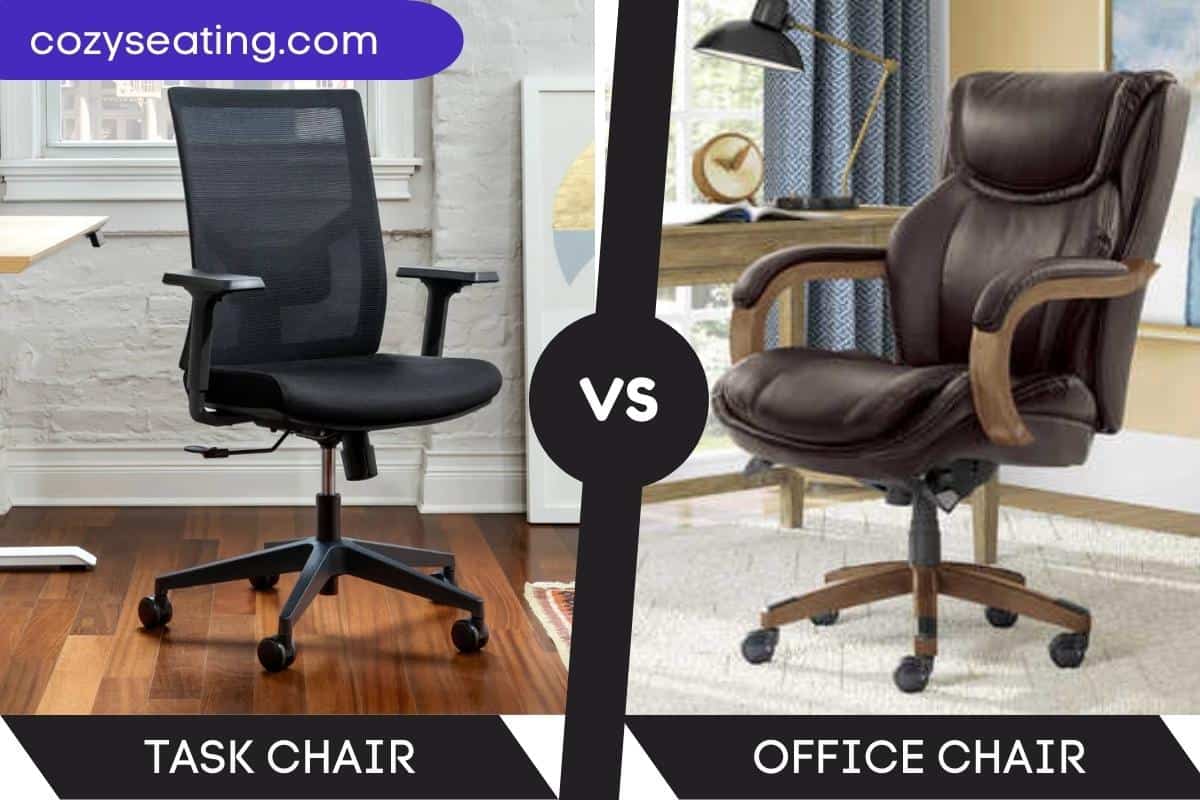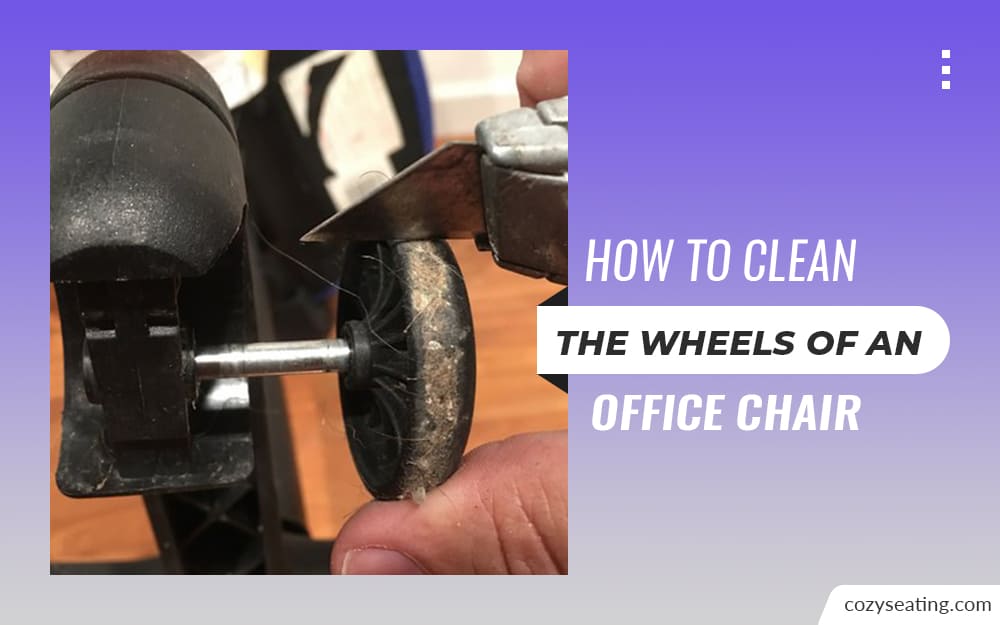
Disclosure: This site is reader-supported & contains affiliate links. We may earn a commission through products purchased using links on this page. Learn more

You want to maintain the beautiful look on your office flooring and ease your movement within your workspace. Therefore, you purchase a chair mat to protect your carpet from your chair’s damage. Your new experience is indescribable!
But then, your new mat can’t stick to its initial position. How to prevent an office chair mat from moving around?
You can prevent your office chair mat from moving around by applying grip underly, grip tape, double-sided, or rubber shelf liner to your mat’s beneath. Use sticky pad underly to make anti-slip mats for hard and tiled surfaces. Place weights on the chair mat, cut gripper tape, and stick it to each of the mat’s edges.
Read on to explore ideal ways of keeping your office chair mat off sliding. But before that:
Table of Contents
Why Do Chair Mats Move On Carpet?
Chair mats move on the carpet because they rest in the fabric loops(carpet piles) of your carpeting. When you walk or move your office chair around your mat, the force you apply transfers through the mat to the carpet.
This weight, in turn, transfers to the carpet piles casing the movement of your chair mat on the carpet. Hence, any activity on the mat leads to its sliding.
The occurrence is common with plush mats that don’t have rubber backing. Although they’re soft, elegant, and luxurious, they can quickly transfer pressure to the carpet, causing loathe.
So, how do you ensure that your office chair mat sticks to its usual position? Here’re some excellent tips to help you out.
How To Prevent An Office Chair Mat From Moving Around?
You’ve different options to choose from to prevent your office chair mat from moving around. Let’s have a look at some 20 helpful ones.
- Non-Slip Backing
- Rubber Waffle Rug Pads
- Rubber Shelf Liner
- Gripper or Claw Backing
- Natural Rubber Backing
- Felt Rug Pad
- Double-Sided Carpet Tape
- No-Hassle Glides
- Gripper Pad
- Gripper Tape
- Hook And Loop Anchors
- Select the Correct Tape
- Choose A Good Quality Mat
- Buy The Right Mat
- Weigh The Mat Down
- Obscure Your Carpeting
- Blowdry Your Mat
- Kitchen Towels
- Silicone Caulking
- Keep Your Mat Clean
Below, we look at each method in detail. So, read through.
1. Non-Slip Backing
Non-slip or non-skid backing materials are rubber-made. Therefore, they can prevent unwanted movement of your mat on the flooring. How? By creating a gripped surface from the carpet to the backing and backing to your office chair. That way, you can easily and comfortably move your chair in any direction without sliding worries.
You can choose to buy a non-skid-backed chair mat or install the backing yourself. You think adding non-slip backing is a mountain-climbing kind of a task? Not really!
Simply measure your chair mat dimensions, cut a rubber that matches the measurements, and place it beneath your mat. Make your rubber backing more sticky by applying adhesive to it if your chair mat maintains the unnecessary motion.
2. Rubber Waffle Rug Pads
Waffle pads are products of sponge rubber. You can purchase the rugs online or from large retailers’ home improvement/ home finishing sections. Rubber waffle rug pads are thin and pre-cut. Also, they are easy to apply, cost-effective, and prevent the movement of your office chair mat on hard surface floors.
Nonetheless, the waffle pads have a significant downside because they lose their gripping ability after a short period. That happens due to the accumulation of dirt and dust in the open grid pattern. The piling dirt can also damage your flooring.
3. Rubber Shelf Liner
Using rubber shelf liner rolls is a great, less expensive backing method for your office chair mat. These materials are either from non-skid rubber or beautiful shelf liner papers.
Nevertheless, experienced homeowners recommend the non-skid rubber type to prevent your chair mat from moving around.
The quality of these liners is the same as that of rug pads. However, they’re only suitable for small chair mats made of lightweight materials. Unroll your liner roll on a flat surface(to minimize the risk of having wrinkles) and fit your chair mat perfectly, then cut the desired size.
Ita worth noting that the method works excellently on all floorings but isn’t ideal for hardwood floors.
4. Gripper or Claw Backing
The chair mat gripper/ claw is a non-problematic backing method designed to keep your office chair mat from unwanted slipping or moving. It works on all floorings and with any type of mat backing.
Apply grippers or claws on the underside of your chair mat and place it on the carpet. The grippers dig deep into the carpet and root your mat on a particular spot. Even if you transfer force to the carpet through the mat, the claws reinforce the mat not to move along.
Since there’re various grip or claw backings, research thoroughly to ensure you get the ideal type for your carpet.
5. Natural Rubber Backing
Natural rubber pads come with solid grid surfaces that work perfectly with thin, flat-weave mats. This backing strategy is a bit expensive because the pads are a product of natural rubber. Even so, the cost is worth it as they’re chemical-free, and thus, they can’t destroy your carpet.
Although natural rubber pads provide insufficient support, they ensure there’s no movement of your office chair mat unnecessarily. Also, you may want to increase the grip of your pad, apply some Sugru.
6. Felt Rug Pad
You can get Felt rug pads in diverse thicknesses and sizes. The pads give your office chair mat significant support and prevent wearing out the fibers. Unfortunately, felt pads won’t work effectively unless your chair mat is quite large.
Felt rugs results from heating the combination of natural rubber backing and felt pads. They form a non-slip pad that prevents the uncalled-for moving around of your chair mat. The rugs also offer comfort. Felt rugs are best for hardwood floors due to their supportive nature and non-slips of the rubber.
7. Double-Sided Carpet Tape
Double-sided tape is great for sticking your office chair mat and carpet. Since the tape is sticky on both sides, you should place the tape between the mat and your flooring, and it’ll hold them together.
You can get the tape as a roll or pre-cut squares and differ in adhesiveness and thickness. If you want a long-lasting tape, get one with acrylic adhesive on both sides. Also, it’s effective on synthetic materials.
Moreover, you need to choose the tape carefully to ensure you get the correct one for the flooring under the mat.
8. No-Hassle Glides
For non-hassle glides, you only need to use your fingers, and within no time, you get the job (mat backing) done. The method is friendly to your flooring surface since there are zero chances of scratches.
Insert the glides between your office chair mat and the carpet. They provide friction that prevents your mat’s slippage when you move the chair around the workspace.
9. Gripper Pad
You can keep your chair mat in one place by placing a gripper pad between your office chair mat and the carpet. Place the gripper pad on the floor and spread your chair mat over it. The mat serves as a template guide to cutting the appropriate size of the pad.
Raise the mat and trim off one inch from the edges throughout the pads perimeter. Lastly, place back the gripper pad on the carpet and use an adhesive to attach your chair mat.
If the gripper pad is adhesive, let the sticky side face up to adhere to the underside of your chair mat.
10. Gripper Tape
Gripper pads have a two to three inches width and come in rolls. They have different sizes and only works with smaller office chair mats. Hence need an all-surface rug gripper tape or a rug-to-carpet gripper tape for a larger chair tape. Gripper tapes allow the removal of your chair mat for easier cleaning. Also, you can reposition the grippers appropriately after the cleaning.
Use the following steps to install gripper tape beneath your chair mat.
- Place your chair mat on a flat surface, with its back facing up, and roll the gripper tape along the mat’s length.
- Make the tape’s length two inches shorter than the mat’s length.
- Place the tape on the mat’s backside with the adhesive side facing down. Make sure the chair mat’s and the tapes’s lengths are at the center, and gently press the tape down.
- Put another similar-sized piece of tape along the opposite edge of your chair mat. Maintain the one-inch spacing.
- Turn over your chair mat and spread out the tape side on the flooring surface.
11. Hook And Loop Anchors
Hook and loop anchors or velcro straps have an adhesive coating on both sides. Simply place your anchor between your office chair mat and the carpet. The two sides stick together, forming a strong bond that keeps your mat motionless.
Moreover, you can reposition your hook and loop anchors if need be.
12. Select the Correct Tape
Different tapes work for specific floorings!
Therefore, conduct thorough research of the available tapes in the market before buying one. If you get the correct type, it’s step one in keeping your office chair mat in one place. The opposite is also true!
For instance, while most homeowners use double-sided carpet tapes, they may not be ideal for hand-knotted chair mats. Even so, you may use the tape with cheaper hand-tufted rugs. It’s also crucial to note that the double-sided tape doesn’t get along with hardwood floors.
Thankfully, there’re high-quality tapes that won’t leave adhesive on your flooring. Also, you can easily remove them, leaving your carpet in good condition.
13. Choose A Good Quality Mat
Like in the case of the tape, you need to do enough research and select the right-quality mat. If you go for an inexpensive, thin, and insubstantial mat for your office chair, there is a high likelihood that they’ll disappoint you.
So, what are the indicators of a good quality chair mat?
Although good quality is relative, a heavy-duty mat is an ideal choice. Such mats
protect your carpet from stains and spills. They also don’t wear out quickly and create more friction that reduces the moving around of your chair mat.
14. Buy The Right Mat
Identifying a good quality mat isn’t enough! Getting the right mat for the intended purpose is equally essential. In this case, you’re looking for an office chair mat. So, you can’t go for a throw mat or a workout mat.
15. Weigh The Mat Down
Weighing your mat down is the simplest and the least expensive method of keeping your office chair mat in one place. It’s probably the immediate action one would take as first aid when the chair mat first slips.
Place books or weights equal to an average person. Although it isn’t a long-term mat slipperiness remedy, it can hold your mat in place as you get an alternative. Even so, ensure the weights don’t obscure the carpet.
16. Obscure Your Carpeting
Your old carpet could be the cause of office chair mat mobility. If the rental agreement limits you, or you aren’t able to replace it, obscuring is a great idea. It minimizes the possibility of your chair mat sliding.
17. Blowdry Your Mat
Put your mat in its purchase box and make a hole in the middle of the top side of the box. Hold your hairdryer, pointing at the hole, and turn it on. Blow towards the center of the mat.
Keep a frequent check on your mat’s warming in five minutes intervals. But, don’t exceed twenty minutes in heating the interior core.
When the core warms enough, remove your chair mat and spread it on the floor. Heat the rest of the mat, starting with the warm parts. Make a zigzag movement of the hairdryer to ensure all parts of your mat are warm and relaxed.
The process takes a shorter time with weight on top of the mat while heating. This method is suitable for thicker mats in cold environments.
18. Kitchen Towels
Dishrags and bathroom towels are inexpensive and readily available materials. Placing them beneath your office chair mat minimizes its movement around your working area. Even if people move around or enter the room, your chair mat can withstand the pressure and remain in its usual position.
19. Silicone Caulking
Silicone caulk is an adhesive sealant resistant to weather, water, and chemicals. It’s the raw material for the small gripper dots o fuzzy socks. The same way the dots prevents us from slipping, silicone caulk can stick your office chair mat in one place.
Squeeze your sealant underneath the chair mat (in dots or strips) in a grid pattern. Allow it to dry completely, then place your mat on the flooring.
20. Keep Your Mat Clean
Cleanliness is vital in every way! Therefore you need to wash your mat regularly!
If your office chair mat soaks with water, sweat, and outside dirt, it can become slippery. Worse still, it may stain your carpet.
How Do You Select The Appropriate Office Chair Mat?
There’re several factors you can consider in choosing a suitable office chair mat, which includes the following:
- Suitable surface
- Carpet pile height
- Weight and usage
- workspace
- Chair mat shape
Below we get to understand each of these. So, read on.
1. Suitable Surface
Office chair mats’ designs cater to carpeted and hard floor surfaces, and you can’t use them interchangeably. Why? Because hard floor mats are prone to sliding on carpets due to lack of backing.
Hence, you should select a gripped chair mat for your carpeted floor. That ensures that your mat anchors safely in place.
For the hard floors, get a smooth back chair mat. In addition to protecting your floor from any damage, the mat stays firmly in one place.
2. Pile Height
Carpet piles determine the thickness of your carpet. Hence, you should be able to distinguish between low, medium, high, and commercial piles. That way, you can get an appropriate office chair mat for your carpeted floor.
For reference purposes, their height is as outlined below:
- Low piles– ¼” to ⅜”
- Medium pile-⅜” to ¾”
- High pile– ¾”
- Commercial pile– ¼”
If you aren’t sure, choose a teacher chair mat than what you guess.
3. Weight And Usage
The amount of traffic and movement in your workspace are essential factors to consider. Select a mat that best suits your circumstance.
Choose a thicker office chair mat where the traffic is high or where a lot of movement is involved. Also, consider the ideal backing method to ensure your chair mat stays in one place.
4. Workspace
Since there’re standard chair mat sizes, consider your working area. Therefore, you need to measure the furthest rolling points of your office chair during a working day. Use those dimensions to select a chair mat that covers the area. That ensures maximum protection of your flooring.
5. Chair Mat Shape
After determining the correct measurements of your office chair mat, you can pick out a shape. You may have a light bulb, lip, and rectangular shape for your mat. Rectangular chair mats are flexible and can fit most office chair layouts. Light bulb mats are ideal for I-shaped and corner office chairs.
FAQs
Are Chair Mats Worth It?
Yes, chair mats are worth it. Why? They protect your flooring from scuffs, spills, indentations, and other scratches. Additionally, chair mats ease your movement within your working area. In fact, it’s 80% easier to move around your mat than a carpet. And long-term rolling on a carpet may lead to leg strain and back pain.
Do Chair Mats Damage Carpets?
Yes, chair mats can damage carpets. How? Heavier chair mats break down your carpet’s fibers and, consequently, harm the entire carpet. Therefore, understand the type of carpet you have in your office. It’ll then be easier to match it with a chair mat whose functions work well with it.
Can You Use A Rug As An Office Chair Mat?
Yes, you can use a rug as an office chair mat. Nonetheless, a rug won’t provide a smooth rolling experience. And, a good-quality rug is more expensive than a chair mat. On average, a rug costs $20- $30 more than a chair mat.
Do Chair Mats Damage Hardwood Floors?
Yes, chair mats damage hardwood floors. Dust and other particles trapped on your mat’s underside scatters on the hardwood floor, and present chemicals can scratch and discolor your floor. Although the chair mats prevent office chair wheels from damaging your floor, these mats damage your floor years down the line.
Are Glass Chair Mats Good?
Yes, glass chair mats are good. They’re more durable and stronger than their plastic counterparts. Also, they offer a smooth gliding surface without warping, bending, or cracking over time. They‘re fresh-looking throughout their period of use.
Parting Shot
Your office chair mat slipperiness has been a big nightmare for you. Not any more! This article has brought a dead end to the issue.
A thicker office mat may adhere better to your carpet. Also, non-slip backing, gripper tapes, and weight, among other methods, hold your mat in one place.
Although all these tips work, you may not like all of them. Therefore, I’d recommend that you test each, identify your best one(s) and stick to it.
Recommended Reading

Why Are Herman Miller Chairs So Expensive?
Why are Herman Miller chairs so expensive? Uncompromised quality, longevity, long warranty among others make them pricy! They're worth it. Click to know more.

How to Adjust Office Chair for Lower Back Pain
Persistent back pain becomes a serious issue if ignored. Adjusting your office chair can solve it. Here’s how to adjust office chair for lower back pain.

Task Chair Vs. Office Chair
Here’s a definitive guide on task chair vs. office chair. Explore to understand the two pieces of furniture and grab the ideal one for a good posture. Welcome!

How to Clean the Wheels of an Office Chair
Hairs and tangles get into the wheels of office chairs, making it hard for them to move. Here’s how to clean the wheels of an office chair. Click to read.
